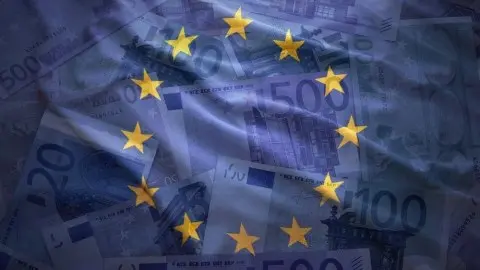Germany: The flip side of being the best
A weak start to the year does not make a fully-fledged downswing. However, boosting investments will be key to solving the current supply-side constraints
The German economy had an unexpectedly weak start to the new year. After a long period of superlatives and strong quarterly growth, a series of one-off factors like the winter weather, the timing of vacation, a flu epidemic and strikes in industry led to speculation about a possible cyclical downswing. In our view, this concern is premature. Sound fundamentals bode well for a rebound in the economy over the summer months. However, the German economy is increasingly suffering from the flip side of being the best: supply-side constraints, hampering future growth.
Weak data at start of the year - no reason for concern?
Disappointing data, both soft and hard, since the start of the year, has cast doubt on the strength of the German economy and invited speculation about the beginning of a possible downswing of both the German and the Eurozone economy. Fortunately, hard data for the month of March brought some relief.
A closer look at the German economy shows promising signs of a rebound in the coming months. Despite some minor levelling off, capacity utilisation is still close to record highs, assured production in the industry is close to all-time highs and the high stock of orders and historically low inventories all bode extremely well for industrial production in the coming months. Also, loans to the corporate sector are currently growing at higher rates than in the pre-crisis period.
Domestic side of economy is hampered by supply-side constraints
The biggest domestic problem for the German economy is that it is almost literally coming apart at the seams. Demand is as insignificant a problem as in the first years after reunification. Instead, supply-side factors are increasingly hampering Germany's growth prospects. Both equipment and labour are currently at their highest levels ever and are limiting factors to production. Against this background, more investment seems to be the best and easiest way forward. It would increase production capacity and could lift the current speed limits.
In this regard, the recently presented long-term budget plan of the new government was not really encouraging. Although the coalition agreement put more emphasis on digitalisation, education and consequently investments, the numbers put on these plans and intentions could have been more ambitious. The coalition agreement foresees a total of around €30bn of new investments, some 0.2% of GDP per year, for the next four years. However, only one-third of this amount would go into future-oriented sectors and projects like digitalisation, high-speed internet etc. The budget plan presented in early May leaves a fiscal surplus, the so-called 'black zero', as the single most important policy target for the next few years. Investments would only increase in 2018 and 2019, before dropping again from 2020 onwards. Admittedly, these were only the plans for the federal government. As a big chunk of public investments has to come from the municipalities, there is still hope for public investments to surprise to the upside. At least the bar for a positive surprise has now been lowered.
External side of economy mainly at risk due to trade tensions
While the biggest domestic challenge for the German economy is to solve the supply-side constraint problem and to finally boost investments (both in the public and private sector), the biggest external challenge currently stems from trade. Since President Trump stepped up his protectionist rhetoric and threats, the German export sector has become somewhat concerned. Rightly so.
In 2017, the US was Germany's largest export partner. The bilateral trade surplus vis-a-vis the US amounted to more than €50bn, with vehicles and machinery recording the largest bilateral surplus. At the same time, Germany runs a significant trade deficit with the US in agricultural products. The only comforting factor for Germany is that it has a very diversified export sector, particularly in terms of geographic diversification. In this context, however, it is noteworthy that the revival of the French economy under President Macron has so far hardly had any positive impact on the German economy. Since Macron's inauguration, the share of German exports going to France has remained the lowest since German reunification. For the time being, the US remains the most important export destination for Germany and sanctions would obviously hurt. And there is more. Even without US sanctions for EU products, Germany could become the first prominent victim outside of a trade war between the US and China. Any Chinese import tariffs on US-produced cars would immediately harm Germany as the single largest car exporting company in the US is in fact a German car manufacturer.
All in all, the German economy is currently in the middle of a difficult combination of negative one-offs; dropping optimism and strong fundamentals. Despite increased downside risks, we stick to our upbeat growth outlook, counting on a further investment offensive in the coming years. These investments are crucial to solve current supply-side constraints and to free up more growth potential. Currently, the German economy is experiencing the flip side of strong growth over a longer period. There are worse positions to be in.
This publication has been prepared by ING solely for information purposes irrespective of a particular user's means, financial situation or investment objectives. The information does not constitute investment recommendation, and nor is it investment, legal or tax advice or an offer or solicitation to purchase or sell any financial instrument. Read more
Download
Download article
17 May 2018
ING’s Eurozone Quarterly: A slower cruising speed This bundle contains 12 Articles